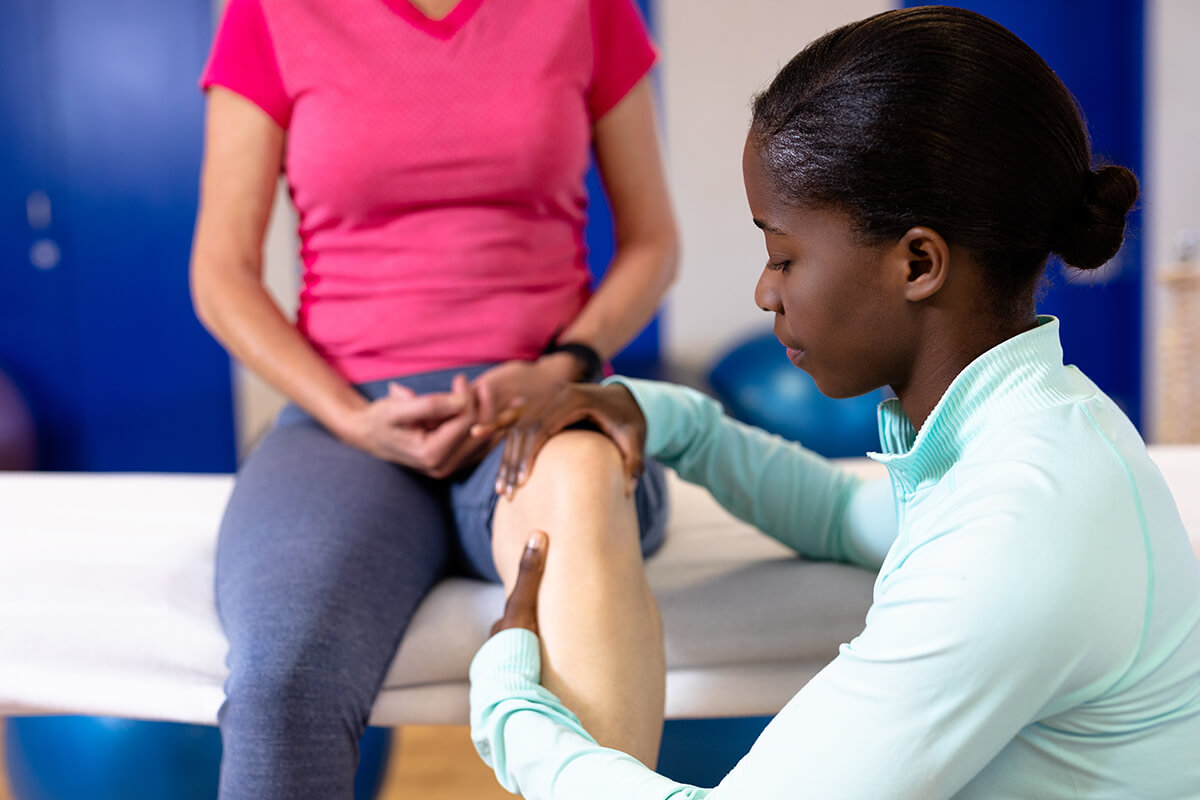10 Tips to Prevent Re-Injury During Your Sports Rehab
Re-injury is one of the most common setbacks people face during recovery, often delaying progress and affecting motivation. Whether you’re a competitive athlete or someone staying active for your overall well-being, getting hurt again after starting rehab can feel like you’re back at square one.
It can lower your confidence, increase downtime, and even lead to chronic problems if not addressed properly. With the right steps, though, you can stay on track, reduce your risk of further injury, and rebuild your strength safely and effectively.
Why Preventing Re-Injury Matters During Rehab
Re-injury doesn’t just slow your progress—it can make your condition worse than before. Many people return to activity too quickly or skip key stages in their rehab program. This often results in further damage, longer downtime, and the risk of permanent issues.
During the recovery process, your muscles, ligaments, and joints are still vulnerable. They may feel better before they’re fully healed, which is why guidance is so important. Physiotherapy gives you a structured plan and personalized support to help you avoid the mistakes that lead to re-injury.

Practical Tips to Support a Smooth and Safe Recovery
Pushing too hard or skipping key steps in your recovery can put you at risk for re-injury. Many people unknowingly repeat the same mistakes that caused their original injury, slowing down healing. By following proven rehab strategies, you can build a strong foundation for long-term recovery and performance.
1. Follow a Customized Rehab Plan
Your recovery should match your injury, your goals, and your body’s current condition. A one-size-fits-all program can overlook the specific stress points in your muscles or joints.
A trained physiotherapist creates a plan that’s based on a full assessment. This includes pain levels, movement limitations, and muscle imbalances. With this information, your rehab becomes more targeted and much safer. Regular check-ins help track progress and make adjustments as needed.
2. Prioritize Gradual Progression
It’s tempting to speed things up when you start feeling better. But pushing your body too soon is one of the easiest ways to get injured again.
Each stage of rehab is designed to build on the last. You need to increase resistance, intensity, or duration in steps. Physiotherapy supports you with progress tracking so you can safely move forward at the right time.
3. Listen to Your Pain Signals
Pain is your body’s way of saying something’s not right. During rehab, it’s normal to feel some discomfort—but sharp or increasing pain is a warning sign.
Ignoring these signals can lead to setbacks. A physiotherapist helps you tell the difference between normal rehab soreness and pain that suggests stress or inflammation. They can adjust your exercises or apply treatments that prevent further strain.
4. Don’t Skip Rest Days
Rest is when your body repairs tissue and builds strength. Skipping rest days doesn’t speed up your recovery—it slows it down by interrupting that process.
Without enough recovery time, inflammation can build and weak areas can get overused. A physiotherapy-based plan includes strategic rest to balance effort and healing. This helps avoid fatigue-related injuries and allows for steady progress.
5. Focus on Proper Movement Mechanics
If your form is off, even simple movements can cause damage. Many re-injuries happen because the body compensates for pain or weakness by moving incorrectly.
A physiotherapist watches your technique closely and corrects faulty patterns. They also guide you through exercises that restore proper muscle coordination. This ensures you’re rebuilding strength in a safe and efficient way.
6. Build Core and Stabilizer Muscle Strength
Your core and stabilizing muscles support nearly every movement you make. If these are weak, your joints may absorb too much pressure, which increases injury risk.
Strengthening stabilizers helps you regain control and balance during activity. Physiotherapy targets these muscles using specific exercises for areas like your hips, shoulders, and spine. This creates a strong foundation for more complex movements later in your recovery.
7. Avoid High-Impact or Uncontrolled Movements
Running, jumping, or twisting too early can reverse weeks of progress. High-impact movements put stress on healing tissues, especially if you haven’t rebuilt enough strength or stability.
It’s ideal to reintroduce these motions under professional guidance. A physiotherapist will use controlled exercises and monitor how your body responds. This reduces the risk of tearing, straining, or reinjuring key areas.
8. Use Bracing or Taping When Needed
Sometimes your body needs extra support during the transition back to full activity. Braces and taping techniques can reduce joint strain and keep movement safe.
A physiotherapist can fit and apply supports properly. They’ll also help you use them as a short-term tool while you build strength and flexibility. This added stability often makes a big difference, especially in the early return-to-play phase.
9. Stay Mentally Patient and Realistic
Wanting to get back to your sport quickly is natural—but unrealistic expectations can lead to rushed decisions. Mental pressure can cause you to ignore pain, skip steps, or push harder than you should.
Physiotherapists set measurable, realistic goals that keep your rehab on track. These checkpoints give you confidence and reduce frustration. When your mind stays focused on the process, your body can heal more effectively.
10. Re-Evaluate Before Returning to Sport
Just because your injury feels better doesn’t mean your body is fully ready. A safe return depends on passing functional tests for strength, range of motion, and balance.
A physiotherapist will guide this process with specific assessments. These tests confirm whether your body can handle the demands of your sport. Without this final step, there’s a high risk of returning too early and reinjuring yourself.

How Physiotherapy Helps Support Long-Term Injury Prevention
Physiotherapy isn’t just about fixing an injury—it’s about building long-term health. Rehab plans are designed to restore strength, improve movement, and prevent future problems. The focus is on controlled progress and education, not quick fixes.
By addressing the root cause of your injury, physiotherapists help reduce the chances of it happening again. They work with you to improve posture, muscle balance, and coordination. These improvements support safe movement patterns that stay with you long after rehab ends.
Ongoing sessions can also include maintenance exercises or performance coaching. This keeps you in good shape even after you return to your regular training. For active individuals, physiotherapy becomes a long-term tool for injury prevention and better performance.
Take Control of Your Recovery with Physiotherapy
If you want a full recovery, you need more than just rest and hope. You need a plan that works for your injury, your sport, and your lifestyle. That’s where physiotherapy makes a difference.
Professional guidance helps you avoid the most common mistakes during rehab. You’ll know when to push forward and when to hold back. With each session, you get closer to returning stronger and smarter—without putting yourself at risk.
Complete Your Recovery the Right Way at Oriole Physiotherapy in North York
Oriole Physiotherapy & Rehabilitation Centre offers sports rehab in North York designed to keep re-injury out of your recovery. Our team works with athletes and active individuals across all fitness levels. We create rehab programs tailored to your injury and goals, with personalized care and one-on-one support every step of the way.
From manual therapy to sport-specific strengthening, our services help you build the foundation you need to move with confidence. We also provide movement assessments, bracing solutions, and progress testing to ensure your recovery stays on track.
Start your recovery right—book your sports rehab session today at (416) 221-0772.
Frequently Asked Questions
- How soon should I start sports rehab after an injury?
You should start sports rehab as soon as your physician or physiotherapist says it’s safe. Early rehab often focuses on gentle movements to prevent stiffness and maintain circulation. Starting early helps speed up healing and improves long-term outcomes.
2. Can I still do sports rehab if my injury happened a long time ago?
Sports rehab can still benefit you even if your injury is old. A physiotherapist can assess any lingering imbalances or mobility issues and design a treatment plan to restore function. It’s never too late to work on stability, strength, and pain reduction.
3. How do I know if I’m overtraining during rehab?
If you notice constant fatigue, soreness that doesn’t go away, or mood changes, you may be overtraining. These signs mean your body isn’t recovering between sessions. Rest and adjusted exercise intensity are necessary to avoid setbacks or re-injury.
4. Is sports rehab only for professional athletes?
No, sports rehab is beneficial for anyone recovering from a sports-related injury, no matter their fitness level. Whether you play recreational sports or are just staying active, rehab helps you heal and return to your routine safely. Everyone deserves proper recovery support.
5. Can I return to my sport even if I still feel a little pain?
Returning to activity while still in pain can lead to compensation and further injury. Pain is your body’s signal that healing isn’t complete. Wait until you’re cleared by your physiotherapist and can move confidently without discomfort.

